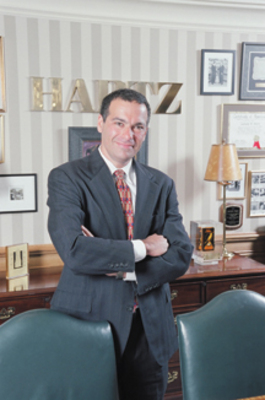Since the recession officially began in December 2007, there has been some debate about whether or not the economy has put a damper on “green” or environmentally friendly business practices.
Some business observers say going green is a luxury many companies that are struggling to stay in business simply can’t afford. Other observers argue that greening a business has no measurable affect on operating costs.
Whatever the case nationally, the green trend appears to be alive and well in the Meadowlands.
“It’s actually economical to go green,” said Debbbie Alaimo Lawlor, Chief of Sustainability and Economic Growth at the New Jersey Meadowlands Commission (NJMC), last week. “Not every aspect of going green costs money or is more expensive than what companies may already be doing.”
In an effort to keep the green trend going, the NJMC and the New Jersey Technology Council last month hosted its annual Sustainable Business and Technology Seminar. The half-day event, which attracted about 300 participants and 40 exhibitors, highlighted how companies can green their operations and included guest speakers and workgroup discussions.
“The seminar was part of our Meadowlands Challenge where we try to recognize green leaders in the area, and educate the local business community to help them become more sustainable, more energy efficient. We specifically wanted to show what companies in our area are already doing to be more sustainable,” Lawlor said. “We wanted to highlight some of the ‘best practices’ in green business so that companies could get ideas for their own operations based on what others are doing.”
Among the local companies highlighted was Hartz Mountain Industries Inc., a development company headquartered in Secaucus. The company made sustainable business practices a cornerstone of its operations about five years ago and has quickly become a local leader in the field. Last month company President and Chief Operating Officer Emanuel Stern was named New Jersey Environmental Executive of the Year.
Starting small
Curt Michael, vice president and assistant general counsel at Hartz, who led a workshop at the NJMC seminar, said the company started small.
“We began with a top-down evaluation of our various building systems,” Michael said. “We have 38 million square feet of office, retail, and commercial space, primarily centered in the Meadowlands area. We started by removing paper cups from the coffee room and we provided everybody with gift certificates to buy ceramic mugs. Around the same time, we created a sustainability committee staffed by senior execs from Hartz’s administration, architecture, development, legal, and capital management departments. That committee started looking at company-wide operations to see where we could incur green savings and lessen our carbon footprint.”
“We have installed solar panel system on top of the Meadowlands Exposition Center in Secaucus.” – Curt Michael
________
Other changes at Hartz’s headquarters on Plaza Drive have included the removal of traditional florescent light bulbs, which have been replaced with compact florescent lights, and the installation of automatic light switches. In addition, as bathrooms at the company are being renovated waterless urinals are replacing traditional ones. Michael said the company estimates that this change will eventually save 40,000 gallons of water a year.
The company has also implemented computerized energy management systems on their building which resulted in an immediate 15 percent savings in energy.
“We literally have miles of flat warehouse roofs in the Meadowlands,” Michael said. “We have installed solar panel system on top of the Meadowlands Exposition Center in Secaucus, which will generate 117,000 kilowatts per year.” (A web site launched last week has a graphic that shows, in real time, the power output of the solar panels on top of the Expo Center, one of Hartz’s 200 properties.)
“It’s one thing for a company to say that it follows an ideology of green building and sustainable design,” Stern said in a statement last week. “It’s another thing to show exactly what has been done, and how. Our hope with this new web site is that other companies can now study what we’ve done in detail and discover ways to reduce their own carbon footprints.”
The company plans to install additional solar panels on other buildings in Secaucus in the near future.
Michael admits there “can often be considerable upfront costs” to implementing sustainable business practices, but, he added, “in the long run I think companies will find their operating cost go down substantially. Our sense is, the long-term savings work out to be better for the environment, and for your bottom line.”
E-mail E. Assata Wright at awright@hudsonreporter.com.
